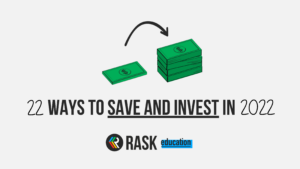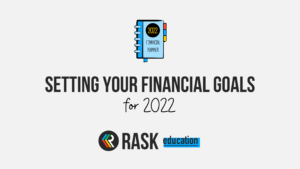The Australian Tax Office or ATO is responsible for ensuring individuals, companies, trusts and other entities lodge their tax returns appropriately. The tax system uses a self-assessment program. Therefore, everyone is responsible for reporting their own tax to the ATO each tax year.
Year end: June 30
How your tax is calculated: Taxable Income
An individual’s taxable income is calculated by starting with their assessable income, which includes all the income they earn (think: salary, share dividends, rental income, etc.) and subtracting allowable tax deductions.
Assessable income – deductions = taxable income
For example, Greg earns a salary of $80,000 and receives dividends of $5,000. His assessable income is $85,000 ($80k + $5k).
But Greg has $15,000 in allowable tax deductions. His taxable income is ($85,000 – $15,000) $70,000.
He pays tax based on the $70,000 of taxable income.
You will pay more tax if your taxable income is higher.
More taxable income = more tax.
For example, Jenny is a part-time secretary and earns a salary of $30,000. She has $5,000 of eligible tax deductions. Her taxable income is $25,000 ($30,000 – $5,000).
Her income tax is $1,292. That is, $0.19 x ($25,000 – $18,200) = 0.19 x 6,800 = $1,292.
Jenny might also pay Capital Gains Tax and/or the Medicare Levy (see below).
| Taxable Income | Tax payable | |
| $0 – $18,200 | $0 | |
| $18,201 to $37,000 | $0.19 for every $1 over $18,200 | |
| $37,001 to $90,000 | $3,572 plus $0.325 for every $1 over $37,000 | |
| $90,001 to $180,000 | $20,797 plus $0.37 for every $1 over $87,000 | |
| $180,001 and higher | $54,097 plus $0.45 for every $1 over $180,000 | |
| Taxable Income | Tax payable | |
| $0 – $18,200 | $0 | |
| $18,201 to $37,000 | $0.19 for every $1 over $18,200 | |
| $37,001 to $90,000 | $3,572 plus $0.325 for every $1 over $37,000 | |
| $90,001 to $180,000 | $20,797 plus $0.37 for every $1 over $87,000 | |
| $180,001 and higher | $54,097 plus $0.45 for every $1 over $180,000 | |
| Taxable Income | Tax payable | |
| $0 – $18,200 | $0 | |
| $18,201 to $37,000 | $0.19 for every $1 over $18,200 | |
| $37,001 to $87,000 | $3,572 plus $0.325 for every $1 over $37,000 | |
| $87,001 to $180,000 | $19,822 plus $0.37 for every $1 over $87,000 | |
| $180,001 and higher | $54,232 plus $0.45 for every $1 over $180,000 | |
| Taxable Income | Tax payable | |
| $0 – $18,200 | $0 | |
| $18,201 to $37,000 | $0.19 for every $1 over $18,200 | |
| $37,001 to $87,000 | $3,572 plus $0.325 for every $1 over $37,000 | |
| $87,001 to $180,000 | $19,822 plus $0.37 for every $1 over $87,000 | |
| $180,001 and higher | $54,232 plus $0.45 for every $1 over $180,000 | |
| Taxable Income | Tax payable | |
| $0 – $18,200 | $0 | |
| $18,201 to $37,000 | $0.19 for every $1 over $18,200 | |
| $37,001 to $80,000 | $3,572 plus $0.325 for every $1 over $37,000 | |
| $80,001 to $180,000 | $17,547 plus $0.37 for every $1 over $80,000 | |
| $180,001 and higher | $54,547 plus $0.45 for every $1 over $180,000 | |
Non-Resident Taxpayers
Non-Residents are taxed at different (higher) rates than Australian residents for tax purposes.
Tip: You should consult a licensed tax agent to determine whether or not you fit into this category.
Common examples
You: “I am here on holiday, or visiting for less than 6 months”.
Likely*: non-resident.
You: “I’m a student from overseas. I am here for more than six months.”
Likely*: Australian resident for tax purposes.
You: “I’m leaving Australia temporarily, but I still call Australia home.”
Likely*: Australian resident for tax purposes.
*This is an indication only. Check with your accountant.
| Taxable Income | Tax payable | |
| $0 – $90,000 | $0.325 for every $1 | |
| $90,001 to $180,000 | $29,250 plus $0.37 for every $1 over $90,000 | |
| $180,001 and over | $62,550 plus $0.45 for every $1 over $180,000 | |
| Taxable Income | Tax payable | |
| $0 – $87,000 | $0.325 for every $1 | |
| $87,001 to $180,000 | $28,275 plus $0.37 for every $1 over $87,000 | |
| $180,001 and over | $62,685 plus $0.45 for every $1 over $180,000 | |
| Taxable Income | Tax payable | |
| $0 – $87,000 | $0.325 for every $1 | |
| $87,001 to $180,000 | $28,275 plus $0.37 for every $1 over $87,000 | |
| $180,001 and over | $62,685 plus $0.45 for every $1 over $180,000 | |
| Taxable Income | Tax payable | |
| $0 – $87,000 | $0.325 for every $1 | |
| $87,001 to $180,000 | $28,275 plus $0.37 for every $1 over $87,000 | |
| $180,001 and over | $62,685 plus $0.45 for every $1 over $180,000 | |
| Taxable Income | Tax payable | |
| $0 – $80,000 | $0.325 for every $1 | |
| $87,001 to $180,000 | $26,000 plus $0.37 for every $1 over $87,000 | |
| $180,001 and over | $63,000 plus $0.45 for every $1 over $180,000 | |
Capital Gains Tax
Capital gains are the gains made on investments, with tax paid when the asset is sold for more than it cost.
For example, Jenny buys shares of BHP on the ASX for $30 (cost) and sells them two years later for $42 (sale price). Jenny has a capital gain of $12 per share ($42 minus $30).
When an asset is sold for less than its cost, it is a capital loss.
Australian residents may be eligible for a capital gains discount of 50% if the asset is held for more than 12 months.
For example, because Jenny sold her BHP shares more than 12 months after she bought them she would pay income tax on 50% of the gain ($6).
Capital Losses Cannot Lower Income Tax
Capital losses cannot be offset against a person’s salary or income. But it can be offset against other capital gains, or potentially carried forward to a future tax year.
For example, if Jenny made a capital gain of $6 per share on her BHP investment and a capital loss of $2 per share on her Telstra shares, she may be able to reduce her capital gain to $4 (that is, a $6 gain on BHP minus a $4 capital loss on Telstra).
TIP:
There are many laws governing capital gains assets and almost as many exemptions to this rule, plus all the other tax laws, so you should seek tax advice from a qualified professional.
Other Taxes and Levies
Further Info:
In addition to the rates in the table above, Australian residents may also be liable to pay the Medicare Levy (2%).
For singles and families who have relatively high incomes ($90,000 for singles; $180,000 for families), an additional tax will apply. This is called the Medicare Levy Surcharge.
That is, it’s another tax on top of the Medicare Levy. However, the surcharge can be avoided by holding the appropriate private health insurance for the full financial year.
Most Super funds pay tax at 15%.
Broadly, there are two types if super funds:
- Complying superannuation funds, which are taxed at a reduced rate, currently 15%. Most funds fall into this category.
- Non-complying superannuation funds, which can be taxed at 47%. Ouch!
Superannuation funds can get a capital gains tax discount, but unlike an individual, it is limited to 33.3% or ⅓ of the gain.
For example, Jenny’s complying super fund makes a $3,000 capital gain on BHP shares, which it held for two years.
Her super fund would pay tax on $2,000 because 1/3 would be discounted for CGT purposes. Because it is a complying super fund, her fund pays tax of only 15%, or $300 (15% x $2,000).
Companies pay tax at a flat rate and are not eligible for capital gains tax discounts.
There can be different tax rates applied to small and large companies. Typically, most large companies pay tax at 30%.
Trusts — and trust tax — can be complex, so you should seek expert advice if you have a beneficial interest, own a trust, or if you have a role to play in running a trust (trustee, executor, etc.).
Broadly speaking, if you receive income, dividends or something else from a trust you may have to add the amount to your income tax return.
Income from a family trust paid to a child can also have tax implications.
In the eyes of the ATO, children pay tax on 2 types of income — and one of them incurs a hefty tax bill.
Basically, if a child ‘earns‘ income like an adult (by holding down a job, for example) they pay tax like an adult (e.g. using marginal tax rates).
However, if the child does not ‘earn’ the income (e.g. they get money from a family true) they may get whacked with extra tax.



